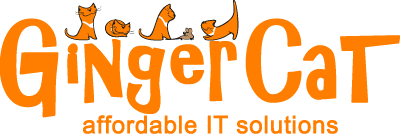Web Design
Creating a website, and the process that is involved during the creation and design of a website, is called the web design process – see below for details of our process
Basic 1 Page templated
A one page responsive design which encapsulates the essence of your business branding along with all the important information about your businessIncludes:
- Website setup
- First year’s hosting fees
- Domain name
- Unique email address
- Contact Us form
- Support
$395 or
$99 setup plus $29 per month
Business CMS Website
5 page content management system with a beautiful design to showcase your business and your own logon so you can keep your website up-to-date
Includes:
- Website setup
- First year’s hosting fees
- Domain name
- Unique email address
- Contact Us form
- Support
$595+ or
$99 setup plus monthly subscription
Business custom website
A one page responsive design which encapsulates the essence of your business branding along with all the important information about your businessIncludes:
- Website setup
- First year’s hosting fees
- Domain name
- Unique email address
- Contact Us form
- Support
$999+ or
$99 setup plus monthly subscription
eCommerce website
A full eCommerce website with paypal facilities
Includes:
- Website setup
- First year’s hosting fees
- Domain name
- Unique email address
- Contact Us form
- Support
$995+
A website consists of many different parts, and a lot of consideration needs to go into every part so, at Ginger Cat, our process ensures that a client’s initial idea grows into a successful website with a strong web presence. Although all websites are different, we usually apply a six step formula when initiating the web design process:
Design and Development Process
- Research
The research stage of any new website begins when we are approached by a new client who needs a web designer. The initial gathering of requirements allows Ginger Cat to analyse what the client wants, determine the intended audience, and what the best website solution might be. A design brief is then made from the gathered information. - Plan
Once all the necessary research has been concluded, including discovering what the goals of the website are, we then start analysing content and keywords which are associated with the client’s business. This task is a critical component of ensuring that any website has good search engine ranking positioning. Once an extensive keyword analysis has been completed, it is time to put together a site map for the web design. A site map is a visual representation of the structure of the web site. - Design
With the web page design structure in place, it is now possible to begin considering the appearance and feel of the website via a process called wireframing. This stage requires frequent consultation between the web designer and the client so as to achieve a web site design that pleases everyone. Analysing the clients target audience is very important during the design phase. - Development
The website design is now transformed from a design to a functional website. The home page structure is formed first so we can create the navigational shell for all other pages. Once this is complete, content is distributed to the pages of the web design. Other elements such as interactive features, online forms and shopping carts are also implemented at this stage. - Testing and Launch
Before a website can be launched it is fully tested for compatibility on different browsers/hardware and also for W3C compliance. The functionality of navigation and interactive content is tested to ensure the website runs smoothly. Once tests are complete, the website will be made viewable to the public.
Maintenance and Data Entry
- Maintenance
Once the website is up and running it must be maintained to ensure it attracts viewers and achieves its objectives. Updated content and Web Marketing is the best way to encourage repeated views to your site. This can be done through an inbuilt Content Management Systems or our paid update service. - Data Entry
Data entry is an essential part of the main web build and post build process. We will always endeavor to populate sites with all essential information and images, as provided by our client. Where there is a content management system as part of the deliverable, clients are expected to upload the majority of content post the design and development build (unless a data entry plan has been put in place).




